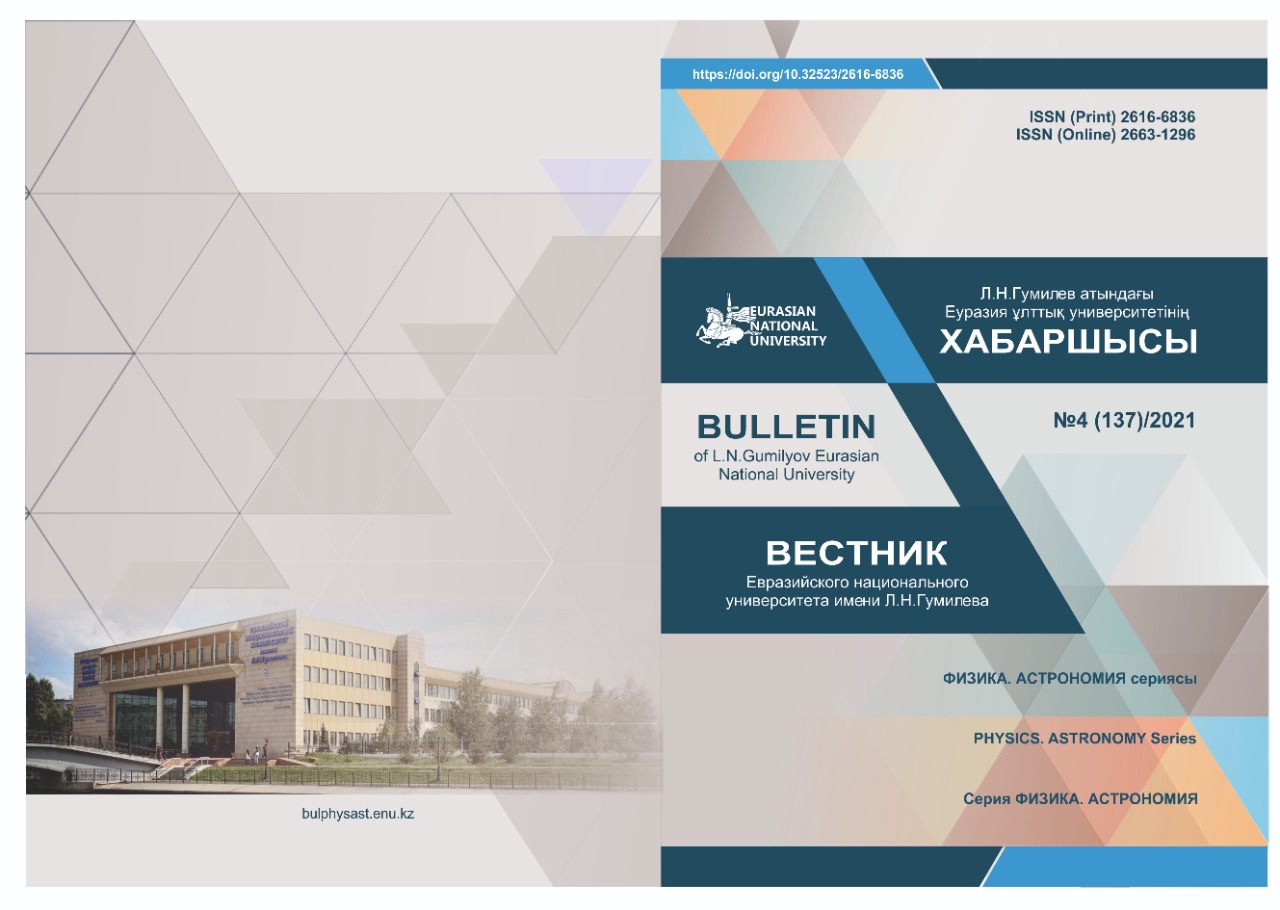Study dependence of Young’s, shear modulus and ultrasonic waves propagation of the vi ice modification to the pressure at a constant temperature
Views: 167 / PDF downloads: 122
DOI:
https://doi.org/10.32523/2616-6836-2020-133-4-73-78Abstract
the paper studied the variation of temperature , pressure and volume during the passage of the first kind of phase from values change of the temperature, pressure and volume at different temperatures of horizontal waves E=E(P), G=G(p), ϑ long = ϑ long (p), VI-th modification of ice, lying at the coordinate P-T [2] phase diagram with a large wave (600-2100) MPa and temperatures (110-330) K), graphs ϑ trans = ϑ trans (P). For the purpose of research, an automated installation was assembled that operates at high pressure(0-3000) MPa and low temperature (90-
300) K. For experimental studies, a piston-cylindrical chamber was used, in which the first layer of P18(HRC=60 ÷ 62), heat-treated, the second and third layers of P18(HRC=58 ÷ 60, HRC=48 ÷ 50) were put on with effort by heating each other. The change in the surface volume was measured through a transducer with an accuracy of ± 0.001 mm, which converts linear motion into electrical impulses with translational and subsequent movements of the moving piston. The pressure in the sample was determined by determining the phase transition points of bismuth and gallium wires (wires) located in it under pressure at different temperatures. The phase transition points were
determined by measuring the electrical resistances Ga, Bi. Also, phase transitions of the ice types I → II,II → III in the p-T coordinate of the ice were used.
The surface temperature was controlled by a temperature-controlled copper-constantane heat shrink (thermocouple) located inside, with an accuracy of ± 1
o C. The temperature correction is ± 2 o C at a pressure of 4000 MPa and a temperature of ∆ T=100 o C. The correction decreases as the temperature decreases. To measure the resistance of gallium and bismuth inside the investigated surface and the voltage in the thermocouple, a copper conductor insulated with a silk thread through a conical channel 1.5 mm in diameter, 1 mm in the direction of the axis of the lower piston was used. To seal the copper
conductors in the channel, we used cotton wool impregnated with epoxy resin. The dependence of
elastic wave velocities at different temperatures in theVI polymorphic ice modification on pressure was measured by the pulse method on a special aggregate installation.










